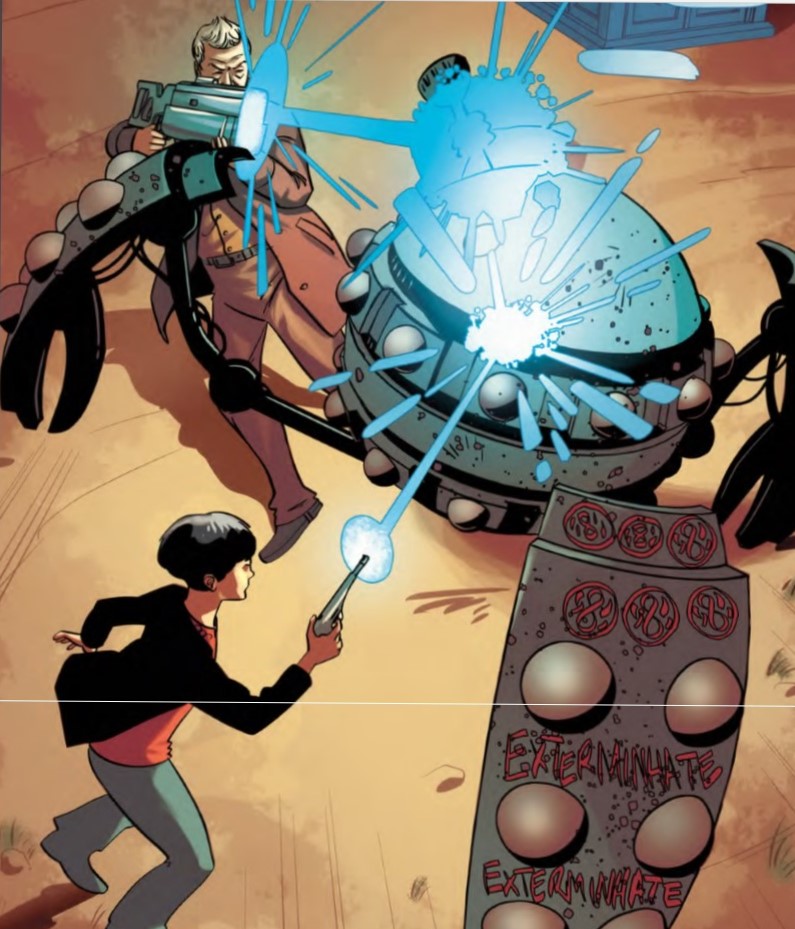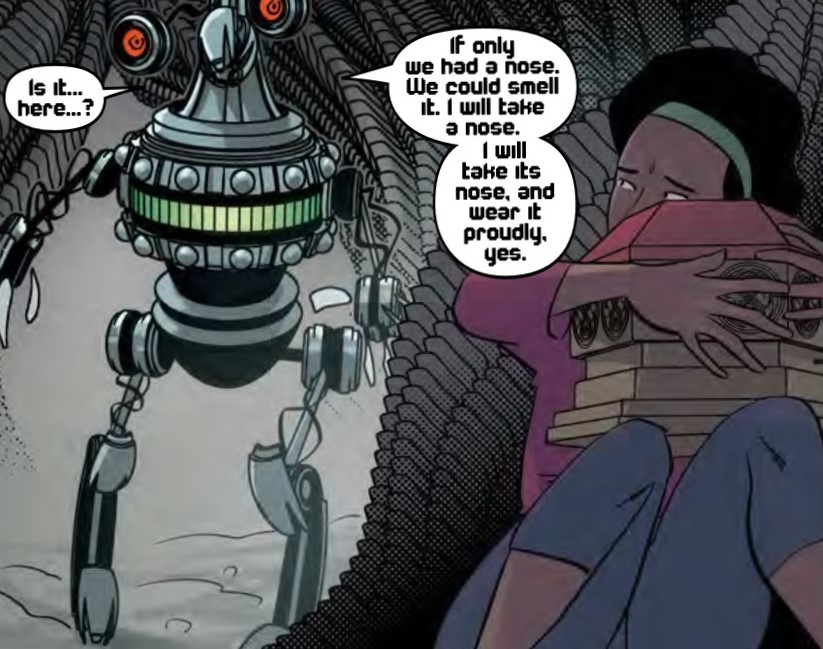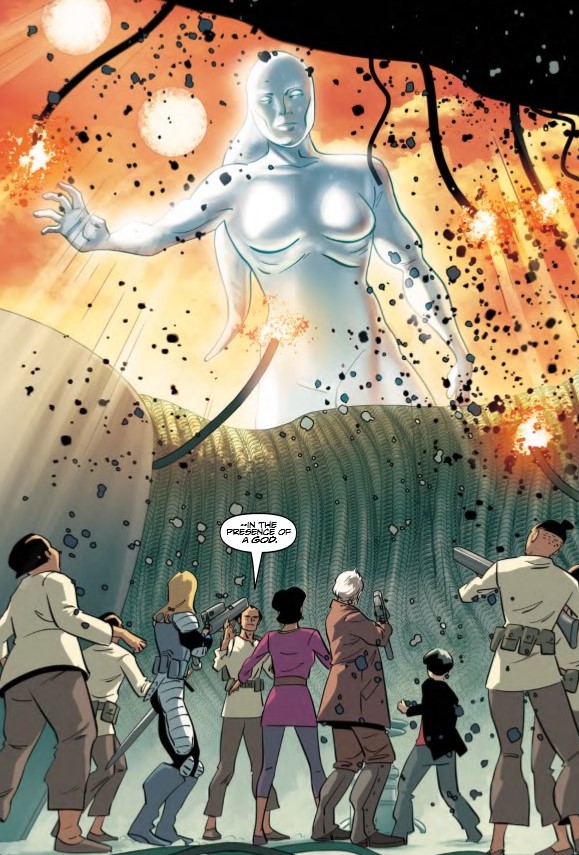Doctor Who - The Eleventh Doctor Adventures - Vol 6: The Malignant Truth
Written by Si Spurrier & Rob Williams
Illustrated by Simon Fraser, INJ Culbard,
Gary Caldwell & Marcio Menys
Titan Books, 2016
HB ISBN: 9781785857300
SB ISBN: 9781785860935
Previously ...
The Squire is dead. Alice Obiefune is lost in the Time War, having piloted the Master's wounded
TARDIS back through the Time Lock. River Song's life hangs in the balance. And infamous Dalek Killer and bounty hunter Abslom Daak is almost certainly going to kill the Doctor for letting Alice go.
Now it's time for the Time War to give up its answers.
How was the Malignant created? Who killed the Overcaste? What great crime was the Doctor
responsible for? But will they be the answers that Alice - and the Doctor - want to hear?
The Malignant Truth is the concluding book which collects issues 11 through 15 of Titan Comics'
Second-year story arc for the Eleventh Doctor (as formerly played on TV by Matt Smith). The Doctor
has been blamed for killing the gods - or at least hyper-dimensional beings worshipped as gods - of
an entire species during the chaos of the Time War. It's a "crime" the Doctor doesn't even recall but
that's no excuse for the godless Overcaste who send bounty hunters after the Doctor, Alice and the
TARDIS, including an anomalous being known only as the Then and Now and notorious Dalek Killer
Abslom Daak.
With an extended TARDIS crew in tow - comprising an unwilling Daak (whose dead, trophy wife
Taiyin is being held hostage within the bowels of the Doctor's erratic time machine), a mysterious
elderly woman who claims she was the Doctor's squire in the Time War, River Song (who has yet
again escaped the sanctity of the Stormcage), and an Alice plagued by a string of "future memories"
of the Time War - the Eleventh Doctor establishes that he, and not the Master, may indeed have
committed the atrocity of which he is accused. This prompts Alice to steal the Master's TARDIS in a
desperate bid to break through the Time Lock and seek to prove the Doctor's innocence or stop his
wartime incarnation from committing a heinous crime.
By far the most interesting aspect of this storyline is the comic's interpretation of the Time War. The
war itself was glimpsed only briefly on TV (The Day of the Doctor) but has been portrayed in Big
Finish's War Doctor saga, in prose such as George Mann's Engines of War, and in Titan's own Four
Doctorsmini-series in 2015. Alice meets the War Doctor (as portrayed by the late, great Sir John Hurt
on TV), the younger Squire and an unexpected, dare I say "impish", version of the Master that will
astonish many readers (but could plausibly tie into Professor Yana's origins back in the 2007 episode
Utopia). A few other tropes from the Time War are also adopted within the story, including the
application of a Gallifreyan Psilent song box, another weapon from the Time Lords' arsenal, which is
very reminiscent in shape and size to the infamous Moment of The Day of the Doctor.
Alice also becomes a prisoner of the Volatix Cabal, a hitherto unknown faction of the Daleks that was hinted at in the chapter Downtime in Volume 5 (originally issue 8 of the Eleventh Doctor Year Two run) and are revealed in all their infamy here. In the Master's own words at the beginning of this volume, the Volatix Cabal are a "Dalek death cult of abominations, deliberately bred for disorder. Reviled by their own kind, tolerated only for the talent that no pure Dalek could possess. Creativity."
Certainly, in terms of style, the Cabal seemingly combine the concept of "spider Daleks" from the 1990s abortive US TV series with the covert zombified human agents that were glimpsed on TV in Asylum of the Daleks and The Time of the Doctor. But it is the Cabal's eerie, melodramatic and almost poetic dialogue and their proclivity for cannibalising the organic parts of other species (which is anathema to their regular counterparts) that makes this breed of Dalek quite sinister and creepy. Indeed, they encapsulate more of the body horror of the Tenth Planet-style Cybermen than the regular Daleks do.
In addition to the Volatix Cabal, Alice, along with the War Doctor and his colleagues, also encounters the Cyclors, the so-called "gods" of the Overcaste. Intriguingly, these "dimensional nomads" are recruited by the Volatix Cabal in a very similar fashion to the way that the enigmatic beings in Big Finish's War Doctor audio drama The Enigma Dimension are solicited by the regular Daleks.
While visually the Cyclors are well realised in the artwork, conceptually they are a disappointment. There is an implication that like the Enigma of the Big Finish drama, the Cyclors are almost naïve and immature, unskilled in the ways of the plane they are visiting. Yet unlike the Enigma, there also seems to be a malevolence and bloodthirst to the Cyclors (based on the new "sensation" the Volatix Cabal has offered them) that the book's scribes Si Spurrier and Rob Williams don't really elaborate on, aside from a throwaway line. Indeed, any threat they may pose to the War and Eleventh Doctors and their companions has all but vanished by the conclusion of the tale
In timey-wimey fashion, the story eventually returns to the "present day" as the Eleventh Doctor, with Alice's help, realises the awful truth and is virtually helpless to avert the triumphant return of the Volatix Cabal. Again, in a manner that is all too frequently criticised about the modern program by fans (especially during the Matt Smith era), key pieces seem to fall into place which enables the Doctor to seize a last-gasp victory from the almost certain jaws of defeat. At any rate, the tension and excitement that ought to be felt at this juncture in the story is lost because there is far too much exposition between the Doctor, Alice, the Squire and River Song about how they have managed to pull off the supposedly impossible victory.
For the most part, the characterisation and dialogue in this volume is consistent with the TV series.The Eleventh and War Doctors and, to a lesser extent, River Song (as portrayed by Alex Kingston on TV) are true to their on-screen personas, although River spends much of this book in stasis as she was infected by the Malignant entity in Vol 5.
The "pint-sized" version of the Master is as Machiavellian as his predecessors and successors, delighting in the moral dilemmas that the War Doctor encounters in the Time War (as it clearly makes them more alike, to the Doctor's disgust). Indeed, he's probably creepier than usual because physically and mentally he could easily be mistaken for an urchin.
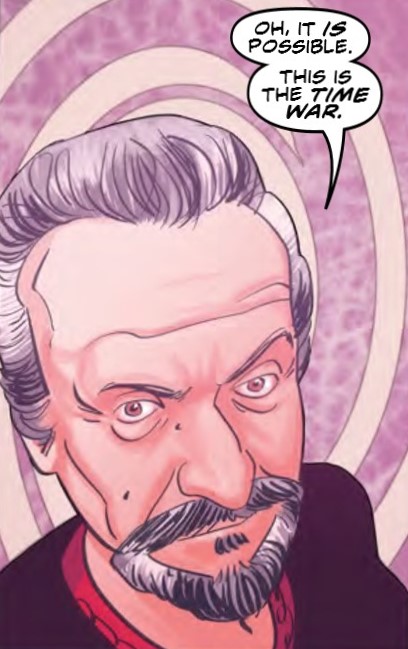
Abslom Daak's portrayal is true to the original one-dimensional character envisaged by the late Steve Moore and Steve Dillon, and is entirely predictable in his actions and motivations ("I got to smash a Dalek! I got to smash a Dalek!"). Daak's fate in this tale is entirely fitting - it gives him renewed purpose (after it seemed in Volume 5 that the disappearance of Daleks from the universe had made him redundant). Aside from inviting chuckles from the reader, the closing panel also raises the potential of a War Doctor mini-series. I suspect the pairing of the Doctor's wartime incarnation with the Dalek Killer - chalk and cheese multiplied by a factor of 10! - would be short-lived but it could make for great storytelling over five or six issues.
The true hero of the story is undoubtedly Alice who literally leaps through hell and back to prove the Doctor's innocence, little realising that she has been manipulated by the Doctor himself. ("You proved you weren't a manipulative, reckless abomination by being manipulative and reckless?" she asks him angrily when she learns the truth.) Nevertheless, Alice proves herself to be a compassionate, faithful, selfless and courageous companion, someone worthy of the Doctor's company, even if he makes her feel otherwise. There is no reason why she couldn't become one of the Doctor's most memorable comic strip companions (after the legendary Frobisher, of course!).
The artwork in this volume is shared between INJ Culbard and Simon Fraser, with Marcio Menys and Gary Caldwel providing the colours. Comic artwork is, of course, a form of shorthand, so it's no surprise that established characters like the War Doctor seem more caricatured than some of the original characters. The artists, though, seem to struggle with capturing Matt Smith's youthful appearance; the Eleventh Doctor, particularly in the climactic scenes in the Overcaste's arena, lacks the defined features that made Matt Smith's appearance (eg the high forehead, the chin) seem so outlandish and extra-terrestrial. Fortunately, the artists provide a good rendering of Smith's features in close-up panels of the Eleventh Doctor.
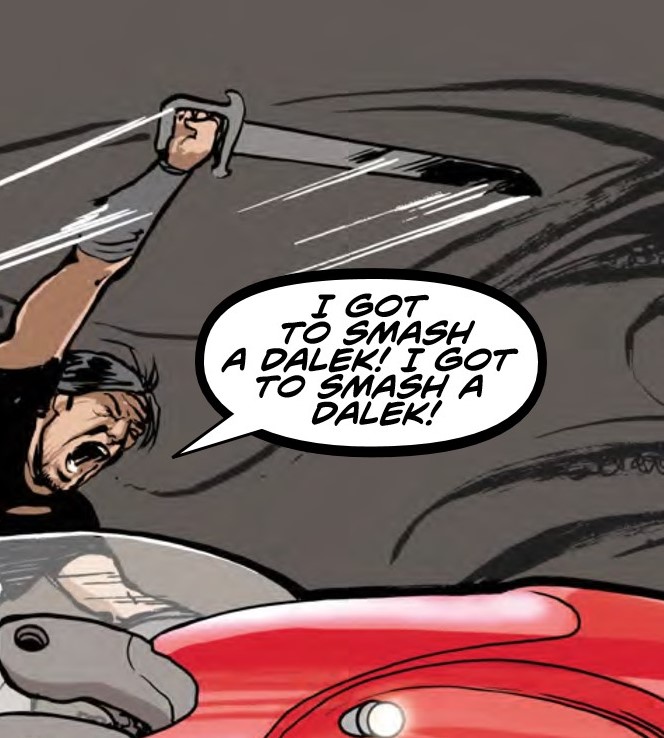
Overall, The Malignant Truth is an example of Doctor Who comics at their best - at least certainly within the Titan stable. Not only this volume but the entire 15-part Eleventh Doctor Year Two arc overall has been highly entertaining, creative and intriguing. Aspects of the story aren't perfect, to be sure (and some of it will no doubt be redundant after the release of BF's War Master boxset this month). It's a bold move for any comic book publisher to run an arc that is effectively 15 months long and could effectively lose readers and deter others. Yet Titan, through a great writing team and some talented artists and colourists, makes it work almost effortlessly.
Now, Titan, about that War Doctor/Dalek Killer Time War team-up ... In memory of the late Steve Moore, let's make it happen! :)
My thanks to Martin Hudecek for the opportunity to review this volume.
